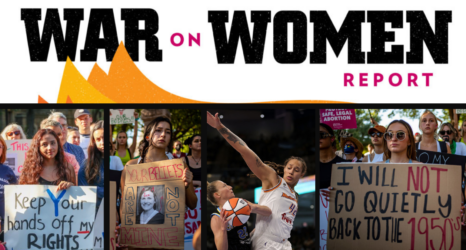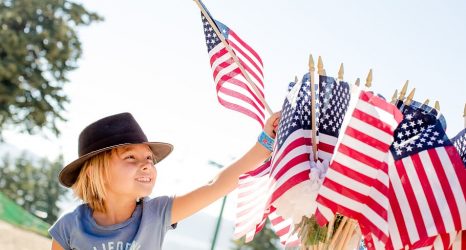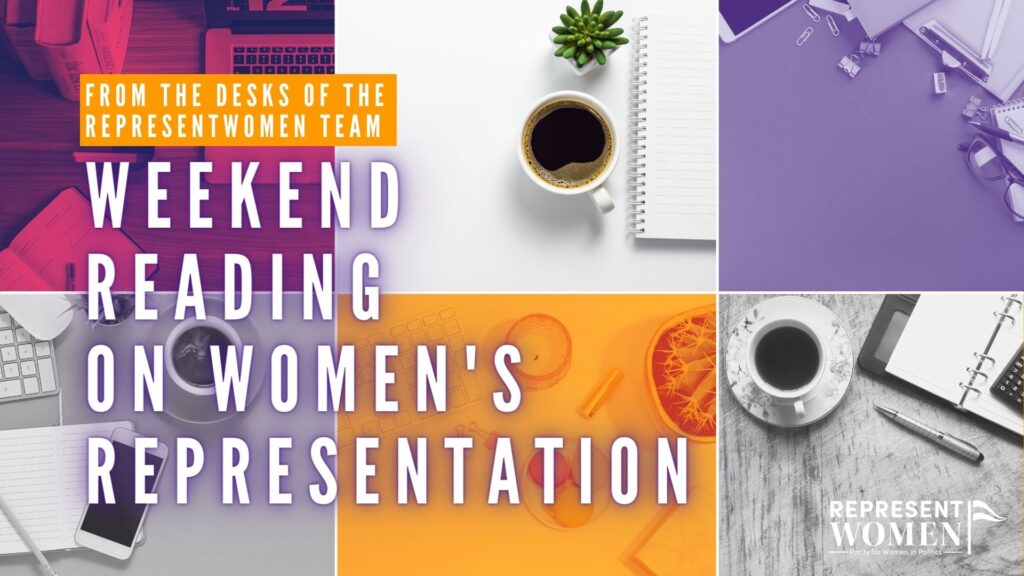
Weekend Reading on Women’s Representation is a compilation of stories about women’s representation in politics, on boards, in sports and entertainment, in judicial offices and in the private sector in the U.S. and around the world—with a little gardening and goodwill mixed in for refreshment!
This week’s celebration of the 247th anniversary of the ratification of the Declaration of Independence is a reminder that the United States was founded on the idea that political power comes from the people, not a monarch. While this idea was revolutionary in 1776, the majority of people living in the fledgling nation had little to no say in government—despite Abigail Adams’ plea to “remember the ladies.”
RepresentWomen imagines a democracy where everyone has a seat at the decision-making table. This week’s Weekend Reading features stories about American democracy and the strategies necessary to realize John Adams’ dream of government being a “portrait of the people in miniature.”
The United States’ Journey to an Inclusive Democracy
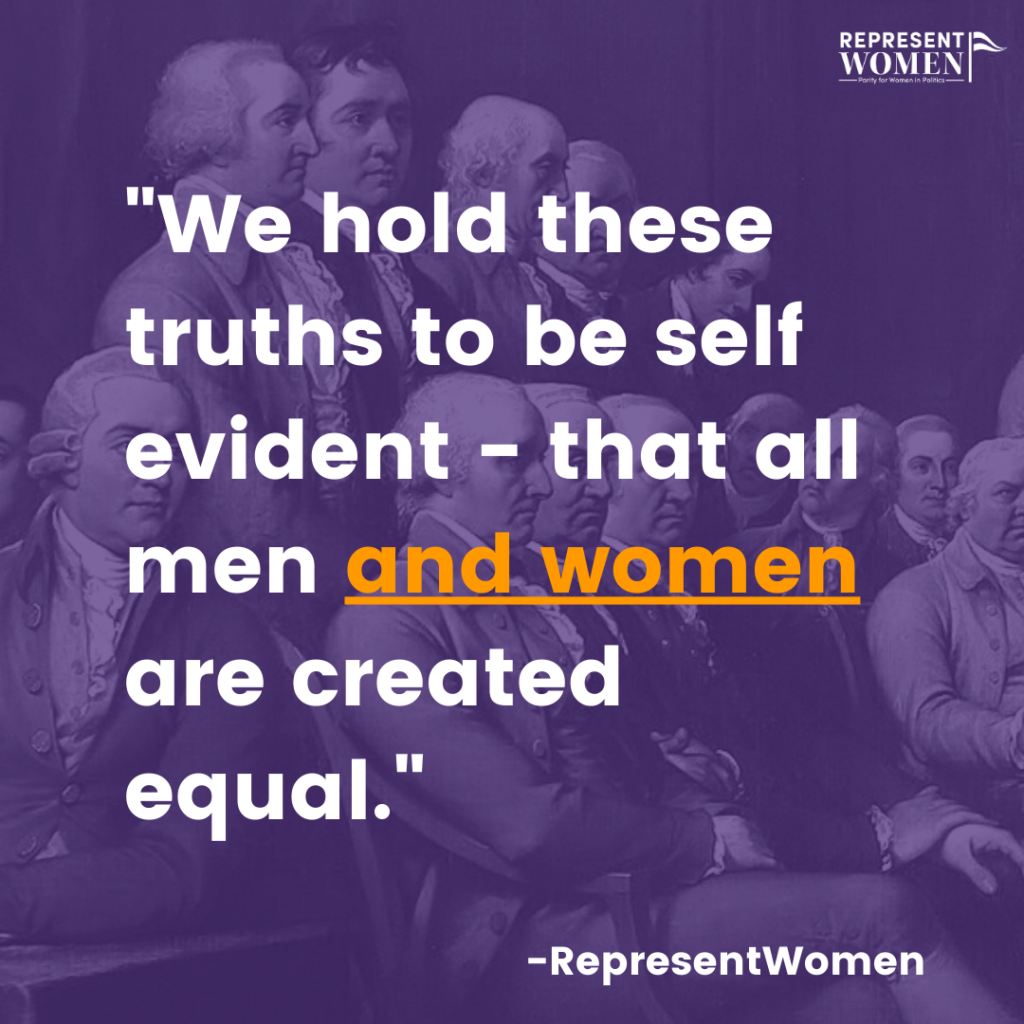
While picnics and fireworks have become a time-honored tradition, they can distract us from the exclusionary origins of the holiday. “We the People” originally only applied to privileged white men. While Black men, women and people of color eventually earned the right to vote, women and other marginalized constituencies continue to face structural barriers as candidates and as elected officials. Systemic changes like implementing ranked-choice voting and gender quotas are proven ways to increase reflective representation in government.
In 1971 “We the People” again expanded to include younger people, with the lowering of the voting age from 21 to 18. The ongoing Vietnam War shifted public opinion, and there was popular support for the idea that someone old enough to die fighting for their country should also be able to vote.
A government once described by Abraham Lincoln as “of the people, by the people, and for the people” was now going to technically include all of the people.
But equality for women, young people, and racially marginalized groups did not change overnight.
Social equality remains far off for many people, including undocumented immigrants, for example, and LGBTQ+ individuals…
Voting is not the only form of recognition and participation in a democracy. People can be respected at work, paid what they are worth, and treated with dignity. Community members can be treated fairly by police, school officials, and other authorities, given an equal opportunity for justice and education to improve their lives.
People can also contribute to the social and economic well-being of a democracy in ways other than voting, doing everything from planting a tree in a public park to attending a political rally.
But the overall expansion of voting rights and a historical understanding of “We the People” shows that everyone belongs in a democratic society, regardless of wealth, achievement, or other differences.
The Supreme Court Is ‘Making History for the Wrong Reasons’
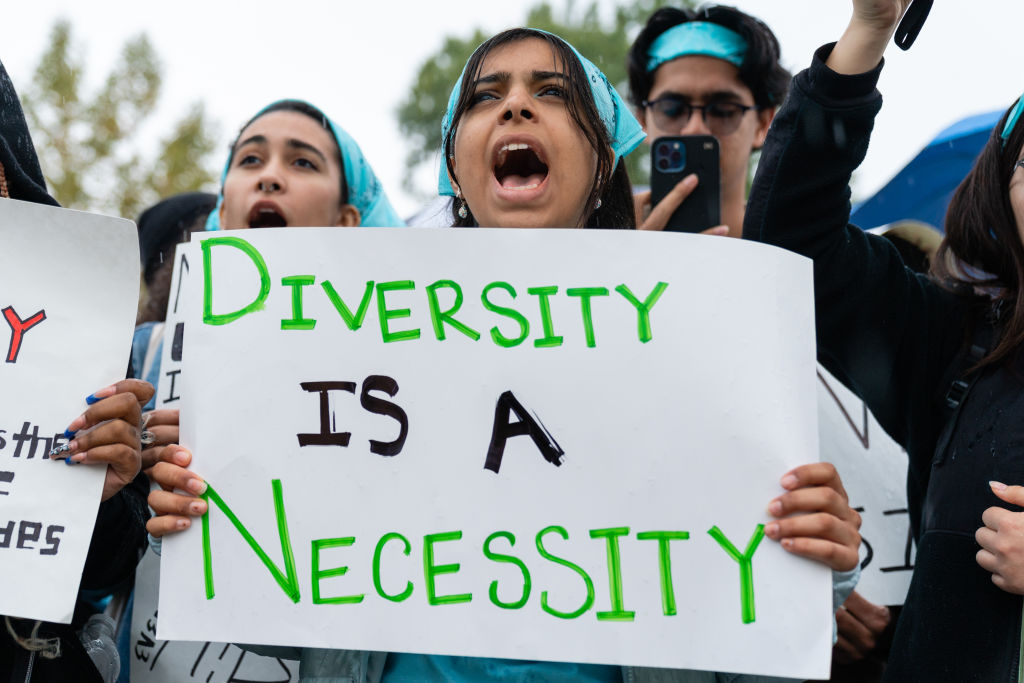
This term, the Supreme Court has made decisions that confirm that we are in an era of democratic backsliding. However, as with our voting systems, reforms exist that would create a more responsive and accountable Supreme Court. These include implementing a code of ethics and expanding the number of sitting justices.
Congress has the power to reform the Supreme Court, and we have the power to reform Congress. It all begins with changing our voting systems to enable candidates that represent us to run, win, serve and lead.
“The courts, if they were to proceed without any check on their power, without any balance on their power, then we will start to see an undemocratic and, frankly, dangerous authoritarian expansion of power in the Supreme Court,” Rep. Alexandria Ocasio-Cortez (D-N.Y.) said Sunday on CNN’s “State of the Union.”
In ending federal abortion rights last year, and landing a blow to LGBTQ protections in a decision out Friday, the court is signaling “a dangerous creep toward authoritarianism,” she said.
“They continue to overturn the will of the majority of the people and to make history for all the wrong reasons, legislating from the bench and being political from the bench,” Pressley said during an interview on MSNBC’s “The Katie Phang Show.” “It is nothing but intersectional oppression,” she added.
Women’s Interest in Entering Politics Surged After Dobbs. So Why Aren’t They Running?
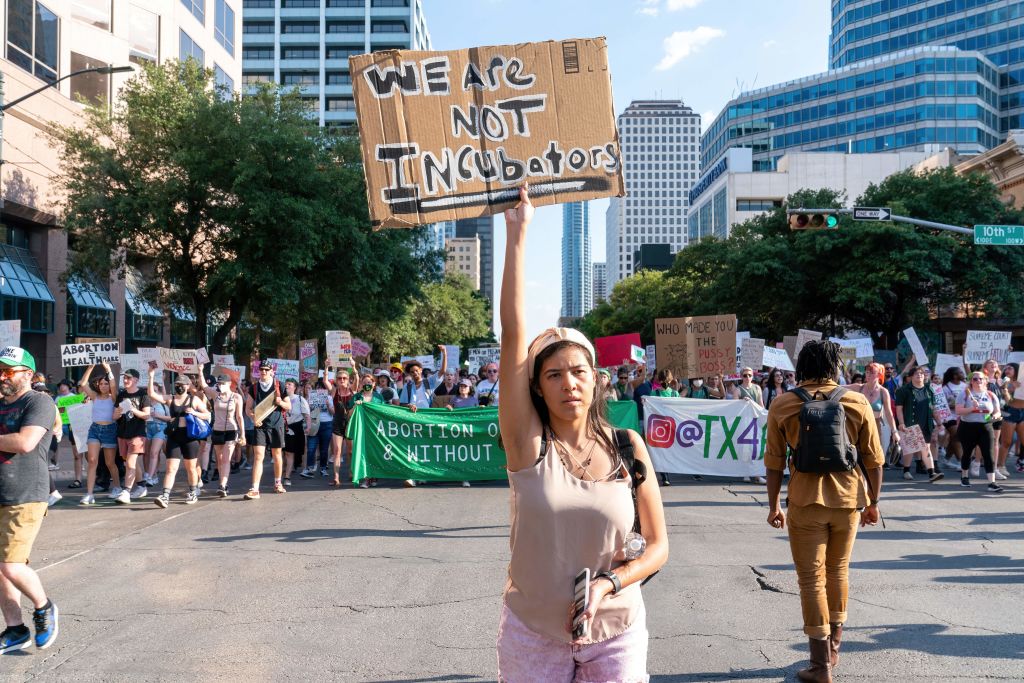
Despite increased interest in running—and numerous organizations recruiting and training women candidates to get involved in politics—the number of women candidates filing to run for office is lower than in recent years. According to this article in The Hill systemic barriers may be impacting the number of women running:
Organizations that recruit progressive candidates and train women to run for office say interest swelled in their programs in the immediate aftermath. But, so far, few have gone on to actually seek office.
Emerge, a campaign training outfit for Democratic women, said interest in their programs more than doubled after Dobbs. Traffic to their website spiked — 28,000 unique visitors that month, compared to less than 10,000 before — applications to their next training bootcamp went from less than 50 to over 100, and interest has remained elevated since, said Emerge President A’Shanti Gholar. “We actually started to see the uptick the moment the draft opinion leaked,” she said.
Run for Something, a group that recruits and teaches young progressives of all genders how to run, also reported an immediate Dobbs effect. Before the decision, the group would get around 250 people a week signing up for information about their training programs; in the three days after, 1,200 people signed up. Signups roughly doubled in the month after Dobbs, from 2,182 to around 4,700.
She Should Run, a nonpartisan group that encourages women to consider seeking political office, similarly said that their webinars focused on reproductive health have drawn more attendees. But a year later, those preliminary steps haven’t translated into a surge of women candidates.
EMILY’s List, which supports Democratic women who back abortion rights, said interest in its “run for” programs targeted at state and local offices increased after Dobbs, and that other programs created in response to the decision have drawn large crowds. But when asked for figures to compare before and after the decision, a spokeswoman said they were unavailable…
That matches preliminary data compiled by the Center for American Women and Politics at Rutgers University, which is tracking whether Dobbs will spur more women into the running. “It’s a little early to tell, but there are some telltale signs that don’t support that,” said CAWP Director Debbie Walsh.
Thus far, there are fewer women running for Congress in 2024 compared to this point in recent past election cycles. CAWP tallies the number of potential and declared women candidates (including incumbents) and, as of Tuesday, they count 241 likely candidates for 2024. That’s a big drop off from 347 women who ran in the 2022 midterms as of July 7, 2021…
So the indications that fewer women may be running even as Dobbs boosts other forms of engagement is a bit of a mystery to researchers who study female political participation. It’s not political apathy; women have outvoted men for decades. Women made up around 52 percent of voters in last year’s midterms, but just 28 percent of members in the current Congress. Still, that total — 153 women out of 540 voting and nonvoting members at the start of the 118th Congress — is a record and 59 percent more than a decade earlier.
Much of that increase can be attributed to waves of Democratic women who launched campaigns and won, starting in 2018, shocked by Hillary Clinton’s loss to Donald Trump in 2016 — even after his infamous “Access Hollywood” tapes leaked. A similar “Year of the Woman” came in 1992, after they watched an all-male Senate Judiciary Committee defend Supreme Court nominee Clarence Thomas against sexual harassment allegations at his televised confirmation hearings. The number of Republican women in Congress has also grown but more slowly and steadily, without the large upswings found on the left.
In those cases, Democratic women were spurred into running after they saw a lack of female representation amid objectionable political developments, said Occidental College political scientist Jennifer Piscopo, citing a recent paper she co-authored with Amanda Clayton at Vanderbilt University and Diana O’Brien at. Washington University in St. Louis.
The preliminary evidence that lots of Democratic women looked into running but haven’t yet jumped into a race, suggests they might be tapped out, Piscopo said. “The Democratic women that are likely to be mobilized by this sense of threat — this sense of feeling like you need to get in there and make the difference — they might already be there [in office],” she said. “There might not have been too many more women for Dobbs to really move or push over the edge.”
Unlike many male politicians, who tend to think of running for office as a career choice — an eventuality that they plan their lives around years in advance — most women need to be prodded, Piscopo said. “It really is this situational moment. And the situation that we focus on in our study is this sense of exclusion [from political decision-making] and policy threat, but there’s going to be other situational factors, right? Is it the right time for my family? Is it the right time for my children? Do we have the money to do this?”
America Had More Than One Founding and More Than One Set of Founders
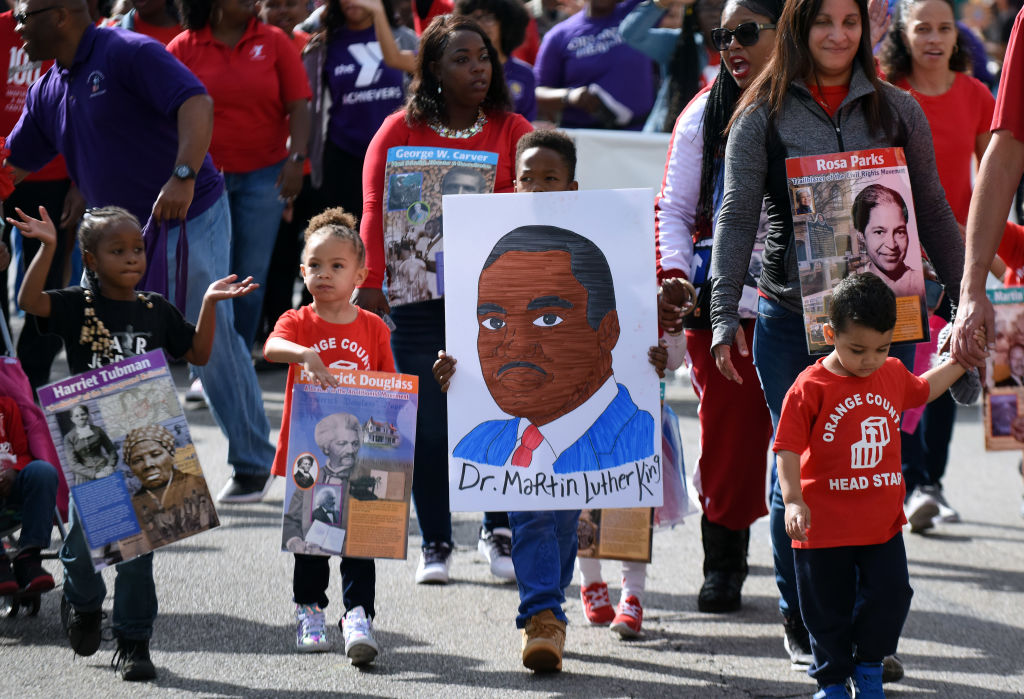
Most Americans associate Independence Day with men like John Adams, Benjamin Franklin, Alexander Hamilton, John Jay, Thomas Jefferson, James Madison and George Washington. But younger generations have begun to reassess the objectives of the Declaration of Independence, with many realizing that America has far more than just one set of founders. These forgotten founders were likely excluded from history because of their race.
The Declaration as we understand it was forged by struggle. Not the struggle with Britain but the struggle within the independent United States for freedom and equality against the weight of the Constitution and the American political system. As you might imagine, the key that shaped our understanding of the Declaration was the fight to end slavery. “The antislavery movement was not,” the historian Alexander Tsesis writes, “a creation of the Revolution.”
As early as 1776, we have a pamphlet by Lemuel Haynes, a free Black Congregational minister in Vermont, titled “Liberty Further Extended: Or Free Thoughts on the Illegality of Slave-Keeping.” He begins by quoting the Declaration of Independence and then, embracing the language of natural rights, goes on to assert that “an African” has an “undeniable right to his liberty: Consequently, the practice of slave-keeping, which so much abounds in this land, is illicit.”
As the 18th century progressed into the 19th, a new generation of abolitionists would marry reverence for the Declaration with fiery contempt for the Constitution. “The duty of every American is to give his sympathy and aid to the antislavery movement,” declared the Garrisonian abolitionist Wendell Phillips in 1847. “And the first duty of every citizen is to devote himself to the destruction of the Union and the Constitution, which have already shipwrecked the experiment of civil liberty.” It was out of the wreckage of the Union that the nation would see a “state which will unfold, in noble proportions, the principles of the Declaration of Independence, whose promises made us once the admiration of the world.”
Of course, Frederick Douglass famously wielded the Declaration of Independence as a freedom document in his denunciation of American hypocrisy over slavery. “Whether we turn to the declarations of the past, or to the professions of the present, the conduct of the nation seems equally hideous and revolting,” Douglass said in “What to the Slave Is the Fourth of July.” “America is false to the past, false to the present, and solemnly binds herself to be false to the future.”
In “Lincoln at Gettysburg,” Garry Wills observed that Abraham Lincoln “was able to achieve the loftiness, ideality, and brevity of the Gettysburg Address because he had spent a good part of the 1850s repeatedly relating all the most sensitive issues of the day to the Declaration’s supreme principle. If all men are created equal, they cannot be property.”
This is true. Lincoln played with the central ideas of the Declaration, as he understood them, for much of the previous decade. We see this when he challenged Stephen Douglas’s assertion that its signers meant “men of European birth and European descent when they declared the equality of all men.”
But Lincoln was also not working in a vacuum. His use of the Declaration of Independence should be situated within the larger context of the antislavery Declaration, deployed by abolitionists and antislavery proponents, Black and white.
Breaking Down Barriers to Women’s Representation Around the World
The pursuit of #GenderEquality in politics isn't merely an ethical obligation — it's a foundational requirement for a prosperous, balanced and inclusive future for us all.
— UN Development (@UNDP) July 6, 2023
Here’s why we must dismantle barriers to women’s political participation: https://t.co/dR6KNbhld4 pic.twitter.com/BzSWKZJez5
Makeda Leikun Yeshaneh, an African Young Women Leaders Fellow at the UNDP, wrote a piece on the need for system strategies to increase women’s political representation. She highlights how despite the recent increase we’ve seen in women running and winning office, we need systemic change to reach gender balance in our lifetimes:
There is a long way to go in attaining gender equality in politics globally, despite its clear positive outcomes. UN Women notes that, under the current trajectory, it will take 130 years to achieve gender equality in the highest positions of power. As of January 2023, 34 women in 31 countries were serving as head of state and/or government; 22.8 percent of government ministers were women; 13 countries achieved the quota of 50 percent or more women in cabinet; and in national parliaments, just 26.5 percent of members in single or lower houses were women.
The march towards equal participation has been agonizingly slow. Despite a modest uptick in numbers over the years, women still face discrimination and barriers, including cultural and societal norms as well as access to financial resources to fully participate in decision-making roles.
Many countries have adopted measures such as quotas, affirmative action, and other temporary special provisions to increase women’s participation. However, these interventions alone are not enough for global gender parity.
I recently helped to undertake a stocktaking exercise which mapped 73 UNDP programmes advancing women’s political participation. This allows UNDP Country Offices and partners to connect and learn from each other. UNDP’s women political participation work has six broad areas of engagement: women’s participation in elections, parliaments, civic life, public administration, peacebuilding and peace processes, and politics and the media. Together, these reflect UNDP’s ability to work holistically with a range of actors to strengthen gender equality in governance.
Roots of the U.S. Constitution Found in Indigenous American Practice of Decision Making
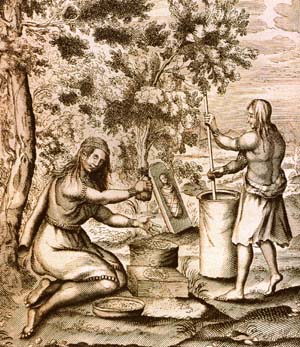
While the scholarship is varied on the impact of the Haudenosaunee on the U.S. Constitution, there is ample evidence that architects of American democracy were inspired by the system of checks and balances practiced by Indigenous peoples in the Americas. As Terri Hanson wrote for PBS in 2018:
The Iroquois Confederacy, founded by the Great Peacemaker in 1142, is the oldest living participatory democracy on earth In 1988, the U.S. Senate paid tribute with a resolution that said, “The confederation of the original 13 colonies into one republic was influenced by the political system developed by the Iroquois Confederacy, as were many of the democratic principles which were incorporated into the constitution itself.”
The peoples of the Iroquois Confederacy, also known as the Six Nations, refer to themselves as the Haudenosaunee, (pronounced “hoo-dee-noh-SHAW-nee”). It means “peoples of the longhouse,” and refers to their lengthy bark-covered longhouses that housed many families. Theirs was a sophisticated and thriving society of well over 5,000 people when the first European explorers encountered them in the early seventeenth century…
The Native American model of governance that is fair and will always meet the needs of the seventh generation to come is taken from the Iroquois Confederacy. The seventh-generation principle dictates that decisions that are made today should lead to sustainability for seven generations into the future. And Indigenous nations in North America were and are for the most part organized by democratic principles that focus on the creation of strong kinship bonds that promote leadership in which honor is not earned by material gain but by service to others.
You may also like: “How Native American Women Inspired the Women’s Rights, Suffrage Movement,” by Dr. Sally Roesch Wagner.
Rank Your Vote: Your Favorite Family Vacation Activities
This week’s ranked-choice voting poll is about your favorite summer activity:
Imagine you are going on a big summer family vacation with only a limited itinerary. Your family has decided to use ranked-choice voting to determine what activity the family will do.
Vote for your favorite here.
Up next:
U.S. democracy is at a dangerous inflection point—from the demise of abortion rights, to a lack of pay equity and parental leave, to skyrocketing maternal mortality, and attacks on trans health. Left unchecked, these crises will lead to wider gaps in political participation and representation. For 50 years, Ms. has been forging feminist journalism—reporting, rebelling and truth-telling from the front-lines, championing the Equal Rights Amendment, and centering the stories of those most impacted. With all that’s at stake for equality, we are redoubling our commitment for the next 50 years. In turn, we need your help, Support Ms. today with a donation—any amount that is meaningful to you. For as little as $5 each month, you’ll receive the print magazine along with our e-newsletters, action alerts, and invitations to Ms. Studios events and podcasts. We are grateful for your loyalty and ferocity.




